Capsule Review: 1992 VW GTI 16v 2.0

(Sorry for the stock photo — had some camera issues during this trip — jb)
Moby Dick. Beethoven’s Ninth. Led Zep’s debut album. As much as we’d like to think that greatness is immediately recognized when it appears, the truth is that most of the time it’s widely pilloried. Such was the case with the second-generation Golf, which was widely considered to be absolute junk for most of its production run yet is now considered by many to be the apex of Volkswagen’s water-cooled production.
The 100-horsepower GTI came in for the most criticism: slower than the car it replaced, less characterful, heavier, blander, and shot through with the notorious quality defects of American assembly, it was widely regarded as a disappointment. To address the issue, VW added the must-have fashion item of 1986: four valves per cylinder for an additional 23 horsepower.
The critics weren’t appeased in the slightest, moaning about the new lows in nose-heavy handling displayed by the “16v” and spitefully noting that the extra power appeared to be tucked into the last fifty revs on the tach. To address this complaint and several others, VW finally released the “Big Bumper” GTIs in 1990, along with a displacement bump to two liters and 134hp. The Big Bumpers traded the generic Jetta face of the old GTI for a quad-round arrangement. The resulting car was eventually considered the ne plus ultra of water-cooled Dubs, particularly in Montana Green.
And that’s what VW’s set out for us at its test day: a 1992 “Monty” 16v. The last time I actually laid eyes on a Monty, some six years ago, it was in the possession of a brilliant and mercurial young woman who would later on lose it to flooding. Death by water.
Phlebas the Phoenician, a fortnight dead,
But as Townes once sang, it don’t pay to think too much / on things you leave behind. Before its Biblical reckoning, that GTI had been in meticulously fettled condition, but Volkswagen’s “heritage” car is, to put it mildly, beat to shit. It’s reluctant to start as I settle into the coal-black interior and twist the key in the traditionally flimsy ignition. Man, this brings back the memories, over a hundred thousand miles traveled in the Volkswagens of this generation. It’s all there: the upright seating position and the worryingly effort-free church-organ pedals, slightly less extreme than what you get in the Mk1 but startling in the modern context none the less, the shifter nearly on the floor in the narrow space between the seats, the flimsy turn signal, the doors that are thin enough to fit in the web of your hand, the syrupy smell of the HVAC.
The extra pounds and inches over the original Rabbit are well spent; this car feels just spacious enough. There’s useful extra space between the seat and the door, courtesy of that tumblehome, and the GTI feels significantly less vintage than its predecessor as a consequence. Until it comes on the cam, however, there’s simply no useful tug from the engine. It’s almost laughable how slow this 16v is. It’s at least “Prius slow” from a rolling stop, hampered further by gearing that feels much taller than what you’d find in the ’84 Rabbit. Eventually the cams arrive and the groaning underhood acquires a bit of an edge, accompanied by a mild pull from the front end. It’s easy to see how torque steer simply wasn’t a concern, even with the strut-front suspension geometry.
As with the other “heritage” cars at this event, this GTI is burdened with despicable rubber, slewing wide at a cornering speed that wouldn’t have taxed a Buick Enclave. Still, since they’re equally handicapped it’s easy to see why people liked the Mk1 better back in the day. There’s just too much weight over the front wheels. My old Fox, with its longitudinal engine, had balance that this chunky two-box hatch can’t shade.
It doesn’t help that this particular example might as well have come from a VWVortex for-sale ad: it has everything from peeling paint to a clutch that is certainly enjoying its last weekend on earth. And yet, in the course of just a few miles I’ve mostly forgotten the condition as I revel in the simple correctness of the Mk2 Golf. Sporty it’s not, at least not in any way we’d recognize in the modern era, but it’s honest. Volkswagen might have styled the thing with a rubber model of the original Golf and a bicycle air pump but they sweated the details that count. The radio: it’s at the top of the dash. How many lives have been saved by the simple expedient of putting the most distracting part of the car near the windshield? The instruments are clean and straightforward, white on black. Same for the hazard button. There’s a single blinking bulb for the turn signal indicator. Why have two? Surely you know which direction you pushed the stalk, right?
Control efforts are light but accurate. Visibility remains excellent, if a touch less outstanding than the Mk1. The seats are good. This was the era when Volkswagen strove for competence and usability rather than faux-BMW upscale appeal. Thirty minutes in this car will change the way you view your own; surely the Mk2 is about all the vehicle 95% of people need. Heresy time: the monstrous trunk of the Jetta is probably worth the extra weight and size, particularly since it wasn’t that much slower than this already lackadaisical hatch.
It’s easy to fall in love with the unvarnished virtues of the second-generation Golf. The only problem is this: in 1992, this was a mild update of an eight-year-old platform that was little changed in basic structure from the 1974 original. An eighteen-year-old car, without much power, selling for a premium price. If you only shopped Volkswagen, as many people did and still do, it was fine. But in 1992, it was possible to spend less and get a Sentra SE-R. The difference on any fast road between a Mk2 GTI and a Sentra SE-R is only marginally less humiliating for the VW driver than it would be were the competitive car a modern Nissan GT-R. Should we even mention the DiamondStar turbos, which were so quick as to be in a different world entirely? The Mazda 323GTX would show taillights to the GTI in all conditions. Hell, your local Ford dealer sold a 127-hp Escort GT that was a better handler and just as quick, for considerably less.
Volkswagen knew they were selling a pig in a poke, and they had plans to blow the competition into the weeds. But the best laid plans often go awry, as we’ll see. Today, the 1992 GTI 16v stands as the best expression of the original water-cooled VW ethos. Simple, tasteful, competent, desirable. The paint has faded on most of them, but their well-earned reputation retains its luster.
(VWoA provided transportation and accommodation for this event, including at least six shots of Ketel One that led to a rant on the part of your humble author about a purported similarity, if not kinship of a sorts, between himself and the fictional character “Avon Barksdale” from The Wire.)

More by Jack Baruth
Latest Car Reviews
Read moreLatest Product Reviews
Read moreRecent Comments
- Bd2 If I were going to spend $ on a ticking time bomb, it wouldn't be for an LR4 (the least interesting of Land Rovers).
- Spectator Wild to me the US sent like $100B overseas for other peoples wars while we clammer over .1% of that money being used to promote EVs in our country.
- Spectator got a pic of that 27 inch screen? That sounds massive!
- MaintenanceCosts "And with ANY car, always budget for maintenance."The question is whether you have to budget a thousand bucks (or euro) a year, or a quarter of your income.
- FreedMike The NASCAR race was a dandy. That finish…



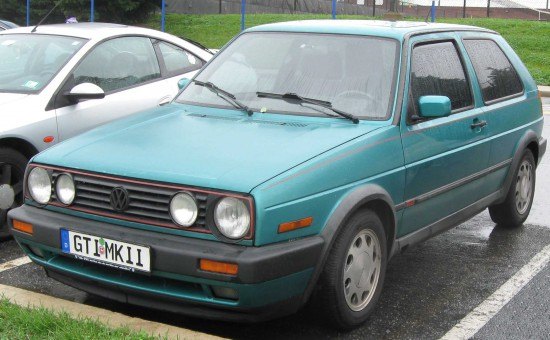














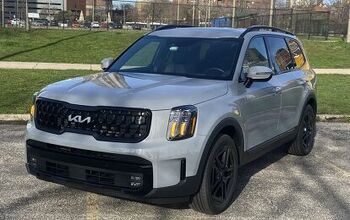
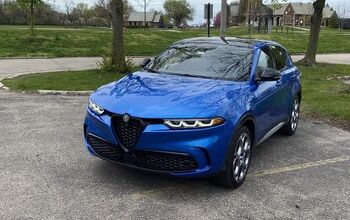

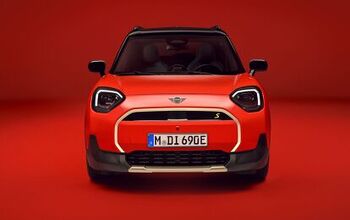





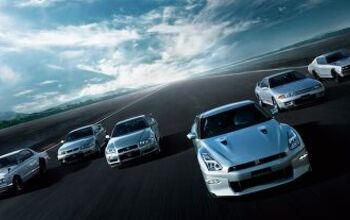

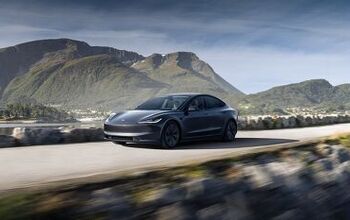
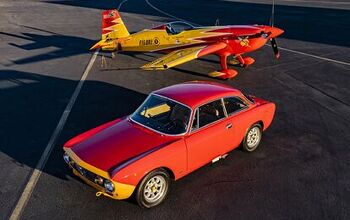
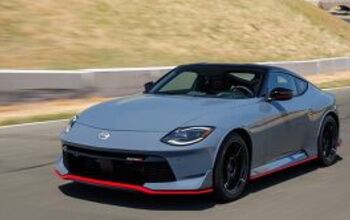
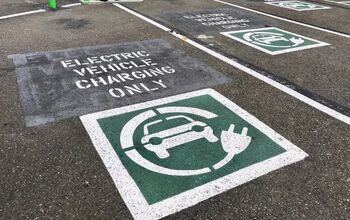


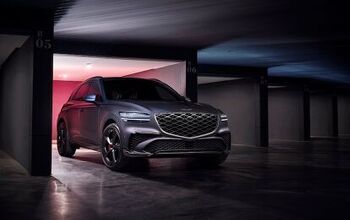
Comments
Join the conversation
An overly harsh review of the MK II...Although the exterior was not near as crisp and clean as the MK i, the interiors were infinitely better...Gone was the "malibuzation" of the Golf. Car & Driver named the GTI to its 10 best list in both 85 and 86, and most road tests showed even the 8V to be just as fast as the Mk I. I owned an 86 with the 102 hp 8V and an 88 with the 123 16V...Loved them both but especially the 16V...It had a nice exhaust growl aqnd looked great especially in white with the black rockers and fender flares and the red trim on the moldings and bumpers...Inside the seats were awesome, the A/C ice cold and a roomy hatch. Lighten up, for the time, these were great cars
"Simple, Tasteful, Competent, Desirable". Agreed. Why does the author rag so hard on the car with those closing words? Doesn't make sense. I have a 92 GTI 16v. It is the coolest car. The seats never leave my back achy. It sounds wonderful. The doors are actually quite durable sounding (?) and wiry the added KW Coilover, Neuspeed sway bars and front Stress Bar.. You simply cannot upset this car. It handles perfect. The styling is no non sense, aggressive, but tasteful. It's timeless. Unlike a same era Escort GT or Sentra SE-R. I drive both of those, as well as an Acura Integra LS, and Mazda MX3 V6. The GTI was by far my favorite. It had feel. Character. Those seats! The motor had more torque. I knew that this was a car I would enjoy for the long haul. I cannot imagine I would feel the same had I chosen an Escort GT. I purposely snatched one of these rare last of the breed MK2's before the MK3 was released. The styling became boring, and they added too much power crap inside. It became heavy. The MK2 GTI 16v was the best hot hatch in the USA. Ever.